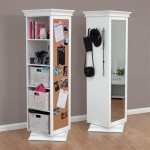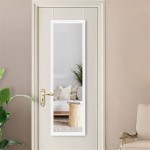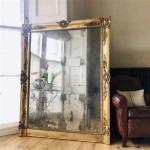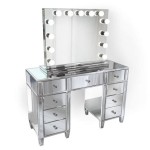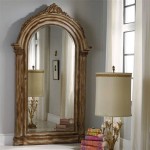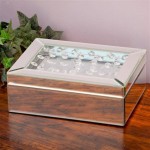How To Choose a Mirror for Your Living Room
A mirror can be a powerful design element in a living room. It can amplify light, create the illusion of space, and serve as a decorative piece. However, choosing the right mirror involves considering several factors to ensure it complements the existing décor and fulfills its intended purpose.
Consider the Living Room's Style
The style of the existing décor should heavily influence the mirror choice. A modern living room might benefit from a sleek, minimalist mirror with a simple frame or no frame at all. A traditionally styled room could accommodate a more ornate mirror with a decorative frame, perhaps featuring carved wood or gilded details. For a bohemian or eclectic space, a uniquely shaped mirror with an unusual frame might be the perfect fit. Matching the mirror's style to the room creates a cohesive and harmonious aesthetic.
Determine the Mirror's Purpose
Mirrors can serve various functions. Is the primary goal to maximize light reflection? A large, strategically placed mirror can brighten a dimly lit room. If the objective is to create an illusion of more space, a large mirror on a wall opposite a window can achieve this effect. Alternatively, a smaller, decorative mirror might serve primarily as an artistic accent, adding a touch of personality to the room. Clearly defining the mirror's purpose helps narrow down the choices.
Assess the Available Wall Space
Before selecting a mirror, carefully measure the wall space where it will be hung. Consider the surrounding furniture and décor. A large mirror on a small wall can overwhelm the space, while a small mirror on a large wall might appear insignificant. The mirror should be proportionate to the wall and the furniture around it, creating a balanced and visually appealing arrangement.
Choose the Right Shape and Size
Mirrors come in a vast array of shapes and sizes. Round mirrors can soften the angles of a room and add a touch of femininity. Square or rectangular mirrors offer a more classic and structured look. Oversized mirrors can make a dramatic statement and significantly impact the perception of space. Smaller mirrors can be grouped together to create a gallery wall effect. The chosen shape and size should complement the room's proportions and the desired aesthetic.
Select an Appropriate Frame Material and Finish
The frame of a mirror can significantly impact its overall appearance. Wood frames offer a warm and natural feel, while metal frames can create a more modern or industrial look. Consider the existing furniture and décor when choosing the frame material. A dark wood frame might complement a traditional room with dark wood furniture, while a sleek silver frame could enhance a modern space with metallic accents. The frame's finish is equally important, whether it's a matte black, a glossy white, or a distressed gold. The finish should harmonize with the overall color palette of the room.
Think About the Mirror's Placement
The placement of a mirror can drastically affect its impact. Hanging a mirror opposite a window can maximize natural light reflection. Placing a mirror above a fireplace can create a focal point and add a touch of elegance. Using a mirror in a narrow hallway can create the illusion of width. Consider the room's layout and the desired effect when deciding on mirror placement. Strategic placement can optimize the mirror's functionality and enhance its aesthetic contribution.
Set a Budget
Mirrors range in price from very affordable to extremely expensive. Establishing a budget before shopping can help narrow down the options and prevent overspending. Consider the mirror's size, frame material, and design complexity when setting a budget. Prioritizing features and setting realistic expectations can lead to a satisfying purchase within the allocated budget.
Evaluate the Mirror's Quality
The quality of a mirror is essential for its longevity and visual appeal. Inspect the mirror's surface for any imperfections or distortions. Check the frame's construction for sturdiness and durability. A high-quality mirror should have a clear, undistorted reflection and a well-crafted frame. Investing in a quality mirror ensures its lasting beauty and functionality.
Consider the Existing Lighting
The existing lighting in the living room plays a crucial role in how the mirror reflects light and affects the overall ambiance. Consider the location and intensity of natural and artificial light sources. A mirror placed opposite a window will reflect natural light, brightening the room. A mirror near a lamp can amplify the light source and create a warm glow. Analyzing the existing lighting helps determine the optimal mirror placement for desired lighting effects.

How To Choose A Statement Wall Mirror The Architects Diary

How To Choose The Perfect Mirror Velvet Karatzas Interiors Atelier

How To Choose A Wall Mirror Living Spaces

How To Choose A Living Room Mirror Guide Soraya Interiors

How To Choose The Perfect Mirror Velvet Karatzas Interiors Atelier

How To Choose The Perfect Wall Mirror Antique Glass Ltd

How To Choose The Right Decorative Mirror

2024 Best Mirror Trends The Blocks Top 10 Mirrors For Your Space Block

How To Choose The Perfect Wall Mirror Antique Glass Ltd

Best Tips For Choosing The Mirror Your Room Ridge Times

